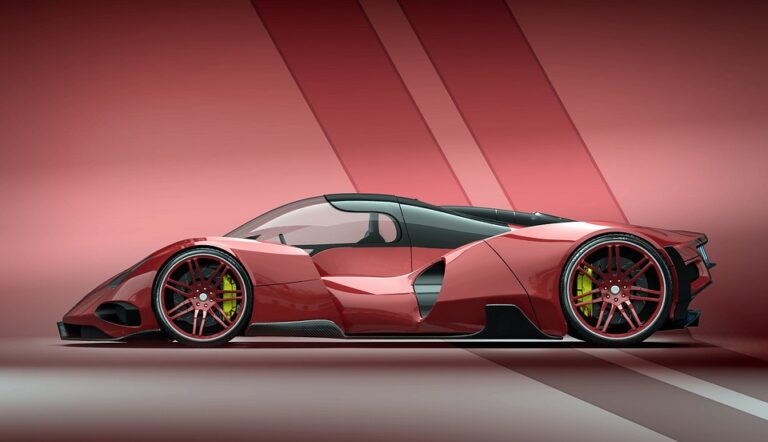Concept Cars vs. Production Models: What Happens Next?
The automotive industry continues to innovate at a breathtaking pace, often exemplified by the dazzling array of concept cars unveiled at major auto shows around the world. These prototype vehicles captivate audiences and industry professionals alike, showcasing futuristic designs and technologies that hint at the next generation of driving. But what happens after the glitz and glamour of the concept reveals? How do these imaginative designs transition, if at all, into production models? In this article, we explore the journey from concept to production, what influences this transition, and why it matters to consumers.
Understanding Concept Cars
Concept cars serve as a canvas for automotive engineers and designers to express their creativity. They are bold, daring, and often speculative vehicles that might incorporate advanced technology or design concepts not yet viable for mass production. Here are several key characteristics of concept cars:
- Innovative Technology: Often equipped with cutting-edge technologies such as autonomous driving capabilities or electric powertrains.
- Radical Design: Unconventional shapes and stylistic choices that reflect the brand’s future direction.
- Limited Production Intent: Most concept cars are not designed for market release; instead, they gauge consumer interest or showcase research and development.
The Purpose of Concept Cars
Concepts serve various purposes in the automotive landscape:
- Marketing and Branding: They help generate buzz for a manufacturer, highlighting engineering prowess and visionary leadership.
- Market Research: Automakers gather consumer feedback on design and feature preferences, influencing future production models.
- Technology Testing: Concepts allow brands to experiment with new technologies and gauge feasibility before committing to production.
The Transition to Production Models
While concept cars often showcase the latest innovations, only a select few make the leap to production. The transition process is complex and multi-faceted, influenced by various factors such as:
1. Market Viability
Before a concept car can enter the production phase, manufacturers evaluate its market potential. Key considerations include:
- Consumer Demand: Is there a target market that will respond positively to the design and features?
- Cost Efficiency: Do projected manufacturing costs align with consumer pricing expectations?
- Regulatory Compliance: Does the vehicle meet safety and environmental standards?
2. Technical Feasibility
Throughout the transition, technical challenges must be addressed. Notable components include:
- Engineering Limitations: Some features seen in a concept may prove too difficult or costly to implement efficiently.
- Production Techniques: Possible revisions are often necessary to make production scalable without compromising quality.
- Supply Chain Considerations: Availability of materials and components can influence what aspects of the concept can be preserved.
3. Brand Strategy
The decision to produce a concept car is also closely tied to the manufacturer’s branding strategy. For instance:
- Aligning with Market Position: A manufacturer may decide to pivot the design to align with their brand ethos or target demographic.
- Having Unique Features: Differentiating from competitors may encourage more radical features to stay relevant.
Notable Examples of Concept Cars Becoming Production Models
Several iconic vehicles have made the transition successfully, highlighting the dynamic relationship between concept and production:
- Toyota Prius: Initially launched as a concept, the Prius debuted as the world’s first mass-produced hybrid vehicle, launching the hybrids revolution.
- Ford GT: The sleek design of the Ford GT concept captured attention, leading to its successful market entry, embodying high performance and cutting-edge aerodynamics.
- BMW i8: The design started as a concept highlighting a vision for the future of sports cars, which was embraced in its production version due to its hybrid technology and stunning design.
What’s Next for Automotive Innovation?
As we move further into the 21st century, the automotive landscape continues to evolve, influenced by technology and consumer preferences. Here’s what to look out for:
Electric and Autonomous Vehicles
- Shift Towards Sustainability: With regulatory pressure and consumer demand for sustainable options, many new concepts will likely center around electric power and advanced battery technologies.
- Autonomous Capabilities: Concepts will increasingly explore self-driving features as manufacturers seek to integrate more advanced autonomy into their future models.
Continued Experimentation
- Design Flexibility: Expect manufacturers to continue pushing boundaries, showcasing eye-catching aesthetics and innovative technologies even if they don’t all reach production.
- Consumer Engagement: Auto shows and online platforms will serve as forums for assessing consumer interest, ensuring that only the most relevant concepts proceed to production.
Conclusion
The journey from concept to production is fraught with challenges, but it is also a testament to the innovation and adaptability of the automotive industry. As manufacturers navigate market demands, technical challenges, and brand strategy, they ultimately shape the vehicles we will see on the roads in the coming years. Concept cars not only inspire dreamers but also lay the foundation for the future of mobility—one that you might soon be driving.
Stay tuned to automotive news for the latest updates on concept cars and production models, and discover how these developments may redefine your driving experience!


